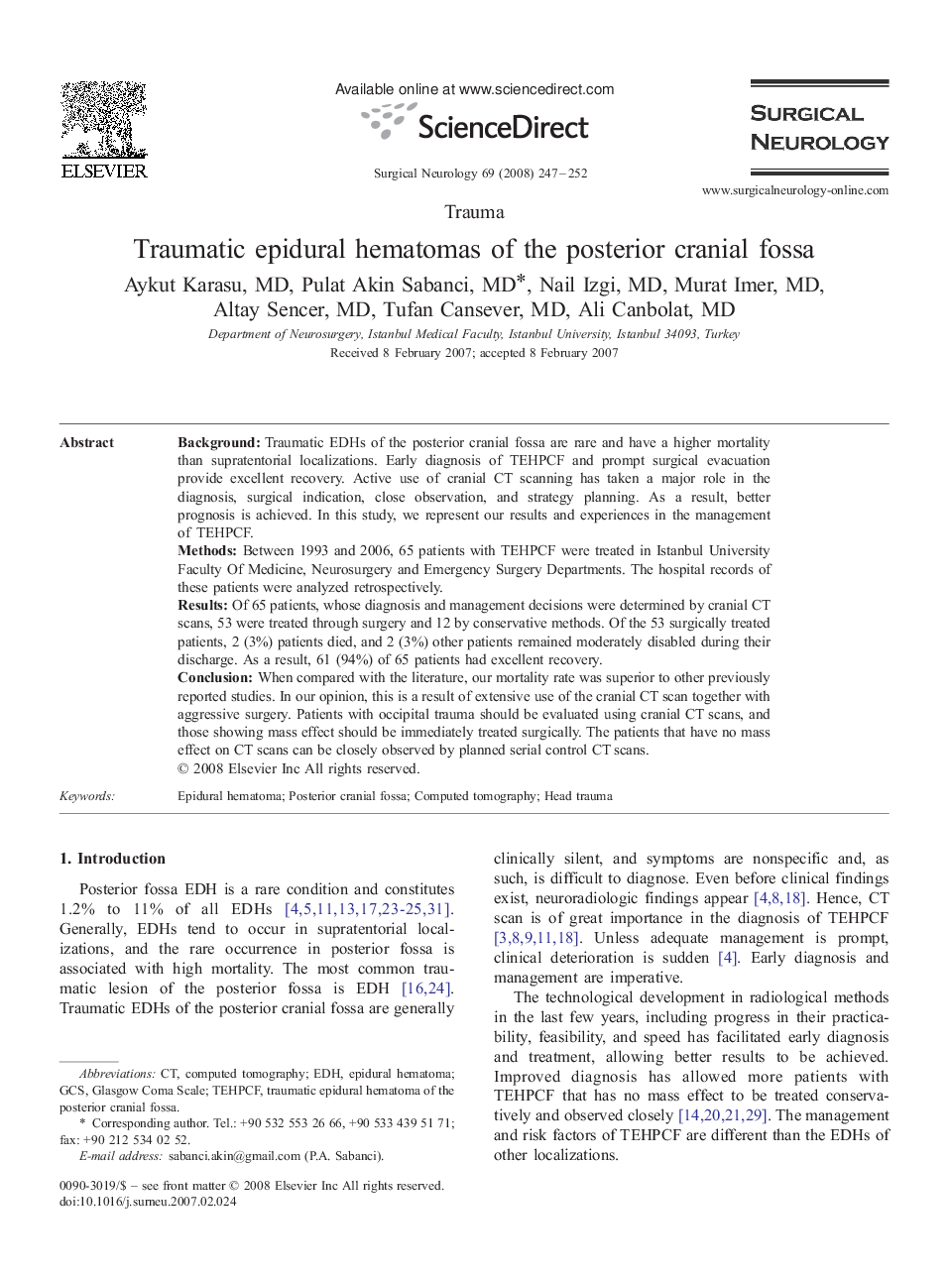| Article ID | Journal | Published Year | Pages | File Type |
|---|---|---|---|---|
| 3093175 | Surgical Neurology | 2008 | 5 Pages |
BackgroundTraumatic EDHs of the posterior cranial fossa are rare and have a higher mortality than supratentorial localizations. Early diagnosis of TEHPCF and prompt surgical evacuation provide excellent recovery. Active use of cranial CT scanning has taken a major role in the diagnosis, surgical indication, close observation, and strategy planning. As a result, better prognosis is achieved. In this study, we represent our results and experiences in the management of TEHPCF.MethodsBetween 1993 and 2006, 65 patients with TEHPCF were treated in Istanbul University Faculty Of Medicine, Neurosurgery and Emergency Surgery Departments. The hospital records of these patients were analyzed retrospectively.ResultsOf 65 patients, whose diagnosis and management decisions were determined by cranial CT scans, 53 were treated through surgery and 12 by conservative methods. Of the 53 surgically treated patients, 2 (3%) patients died, and 2 (3%) other patients remained moderately disabled during their discharge. As a result, 61 (94%) of 65 patients had excellent recovery.ConclusionWhen compared with the literature, our mortality rate was superior to other previously reported studies. In our opinion, this is a result of extensive use of the cranial CT scan together with aggressive surgery. Patients with occipital trauma should be evaluated using cranial CT scans, and those showing mass effect should be immediately treated surgically. The patients that have no mass effect on CT scans can be closely observed by planned serial control CT scans.
